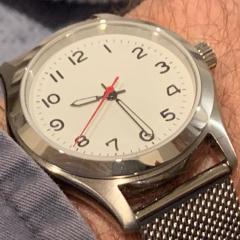Hook repair/replace on Watchmaster MS winder
-
Recently Browsing
- No registered users viewing this page.
-
Topics
-
Posts
-
Probably more than you need to know in these two vids, but sharing because I found them quite interesting. 🙂
-
And then the problem of the stud holder and regulator which are on the wrong sides of each other: I am baffled as to how this will have happened? They can't re rotated into place, the regulator pins stop the spring stud from moving past. I don't think I can remove the regulator and/or spring stud without a staking set?
-
By nevenbekriev · Posted
Just to inform that this is not a shock protection, just end stone fixed in place by the spring. -
I had the privilege to be put on secondment to RR Ansty just outside Coventry to help design and build a power station at the old Fort Dunlop site in Birmingham. The sound of those Trent engines when they fire up is something to behold.
-
By nevenbekriev · Posted
The hairspring is still salvageable. It looks like the bent place is only on the outer coil. But You will need to remove the balance from the cock in order to evaluate the spring condition. The hairspring itself is not replaceable, it is replaced together with the balance wheel as assembly.
-





Recommended Posts
Join the conversation
You can post now and register later. If you have an account, sign in now to post with your account.
Note: Your post will require moderator approval before it will be visible.